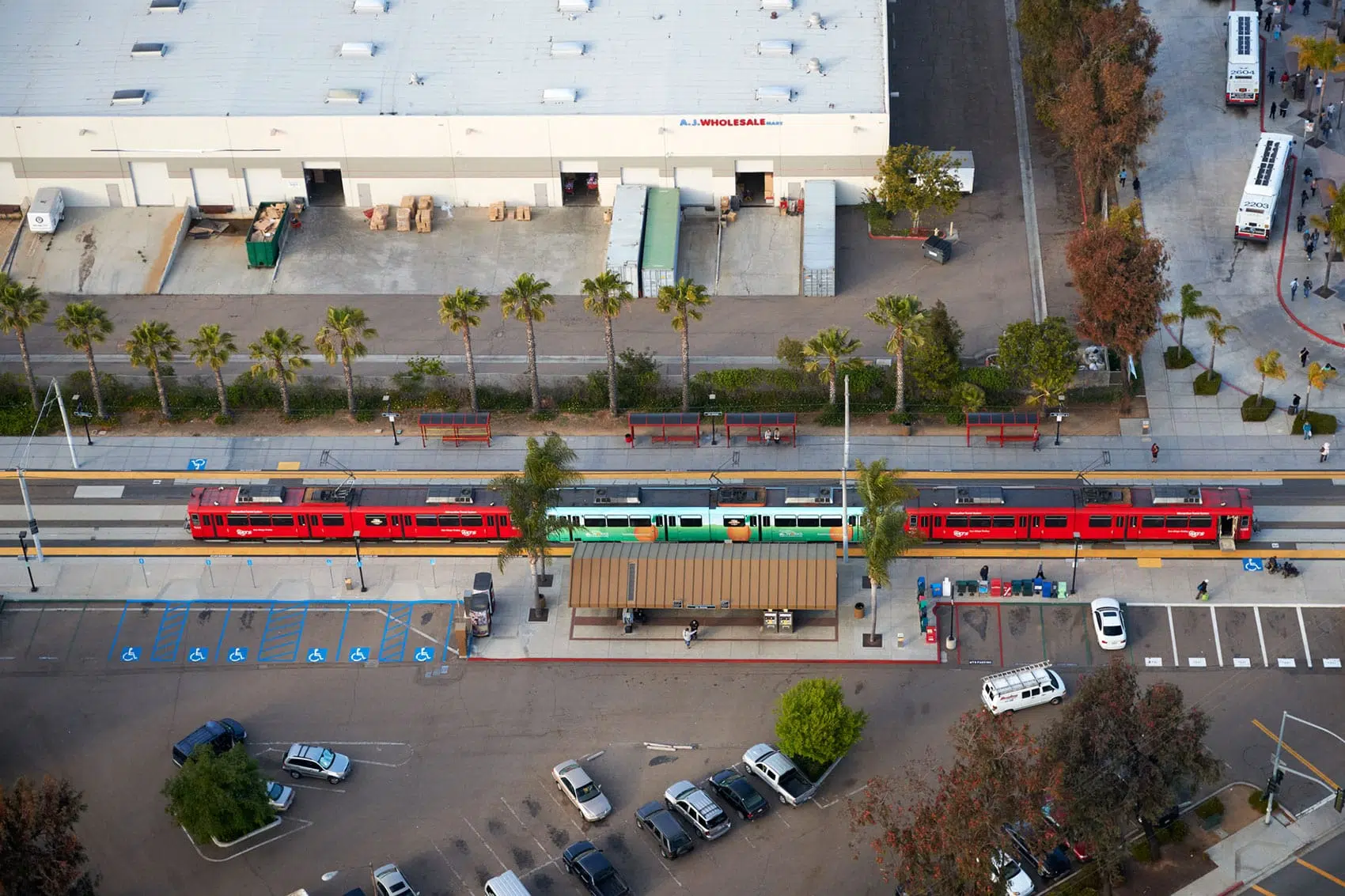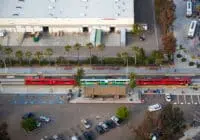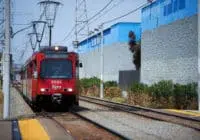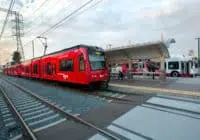Contracted by SANDAG, Kimley-Horn served as the prime consultant providing innovative planning and engineering design for this landmark project. The project included a purchase of 57 ultra-short (82 feet) S70 low floor vehicles; major rehabilitation work on the Blue Line corridor including upgrades and reconstruction of the overhead contact system, substations, track work, train signaling, and fiber-optic communications; and upgrades to the Blue Line stations to accommodate 8-inch-high curb platforms required for low floor vehicle service.
Implementation Plan
Kimley-Horn developed the study that identified rehabilitation and improvement elements on the MTS Blue and Orange Lines and evaluated the feasibility and cost for modifying 35 LRT stations to allow for compatibility for future low floor vehicle boardings. Kimley-Horn also assisted SANDAG staff with the development of the overall rehabilitation program, including program goals and strategies; funding and project costs; program set-up; and design and construction packages for individual projects within the program; preliminary scheduling; and resource allocation.
LRT Vehicle Assessment Study
MTS procured 57 ultra-short S70 low floor vehicles from Siemens Transportation Systems, Inc., which provided level boarding for all riders and replaced some of the 134 light rail vehicles in operation on the MTS lines, many of which were more than 20 years old. The Kimley-Horn team performed the assessment study that evaluated potential modifications to the existing MTS fleet for low floor capability and potential procurement options for vehicles.
Blue Line Station Improvements
Kimley-Horn performed the conceptual and preliminary engineering and is currently performing final design services for the reconstruction of the 12 trolley stations along the Blue Line corridor from Barrio Logan to San Ysidro. The reconstruction achieved an 8-inch height between top of rail and boarding locations, improve existing and add new multimodal transit stations, and improve bike and pedestrian circulation and connectivity. Kimley-Horn was responsible for all the civil engineering, utility engineering, right-of-way, electrical engineering, communications, urban design, landscape architecture, rail engineering, and structural engineering for the station reconstruction including the following elements: modifying the platforms from level (0”) to 8 inches above top of rail, site work for drainage and ADA accessibility, revisions to existing pedestrian connections, landscaping and utilities, new station amenities (shelters, benches, pavement treatment, lighting, etc.), track and grade crossing replacement, and lighting and communication upgrades.
As part of this project, Kimley-Horn’s staff developed construction staging that allowed for construction and continued revenue service; coordinated with other projects under construction within the same corridor; and achieved stakeholder consensus on station layout, urban design amenities, and shelter design.




